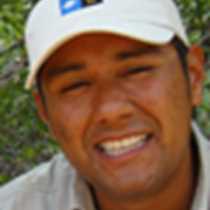Fernandina and Isabela Islands
As a naturalist guide, I will say that I have been many times to the most-visited places in the Galápagos. But it doesn’t matter how many landscapes and animals we see; we will always find something different on the island that glows in our minds and will remember why our profession is so special.
Fernandina is the youngest island with a relative age of 350,000 years. Many creatures have established large colonies along the shoreline. Volcanism forces dominate the survival of many species by constantly reshaping landscape and those who live on it. Land iguanas inhabit the caldera while marine iguanas and other animals are found at the coastal region, attracted by a highly productive ocean.
Very early in the morning we disembarked at Punta Espinosa with our expert photographers, in search of sunrise and wildlife. What we saw today was spectacular since the warm water temperatures increase the activity: penguins fishing, iguanas fighting to reproduce, flightless cormorants looking for octopus. Maybe the patience and detailed observation of many animal behaviors allowed us to understand why some creatures do unusual things, but some break the rules. We saw a marine iguana walking all the way up to a lava cactus colony! Why? Well there are just some things that we can’t explain.
In the afternoon at Punta Vicente Roca the zodiac ride was amazing: green sea turtles, marine iguanas, penguins, ocean sunfish and even a marlin! I have never seen one alive before. The rare formations of some lava dykes allowed us to imagine how this place emerged from its magma chamber, making its own way through the crust.
We had a remarkable day.




